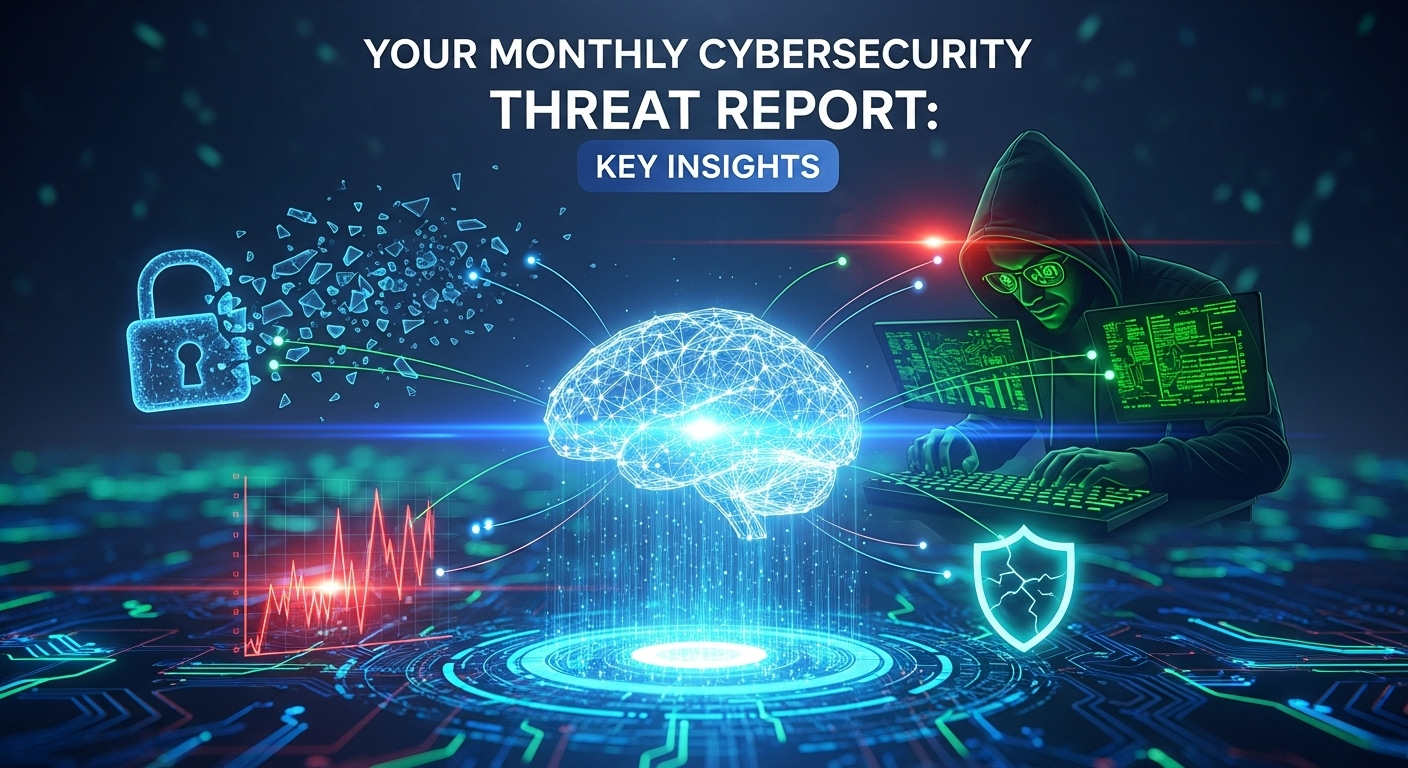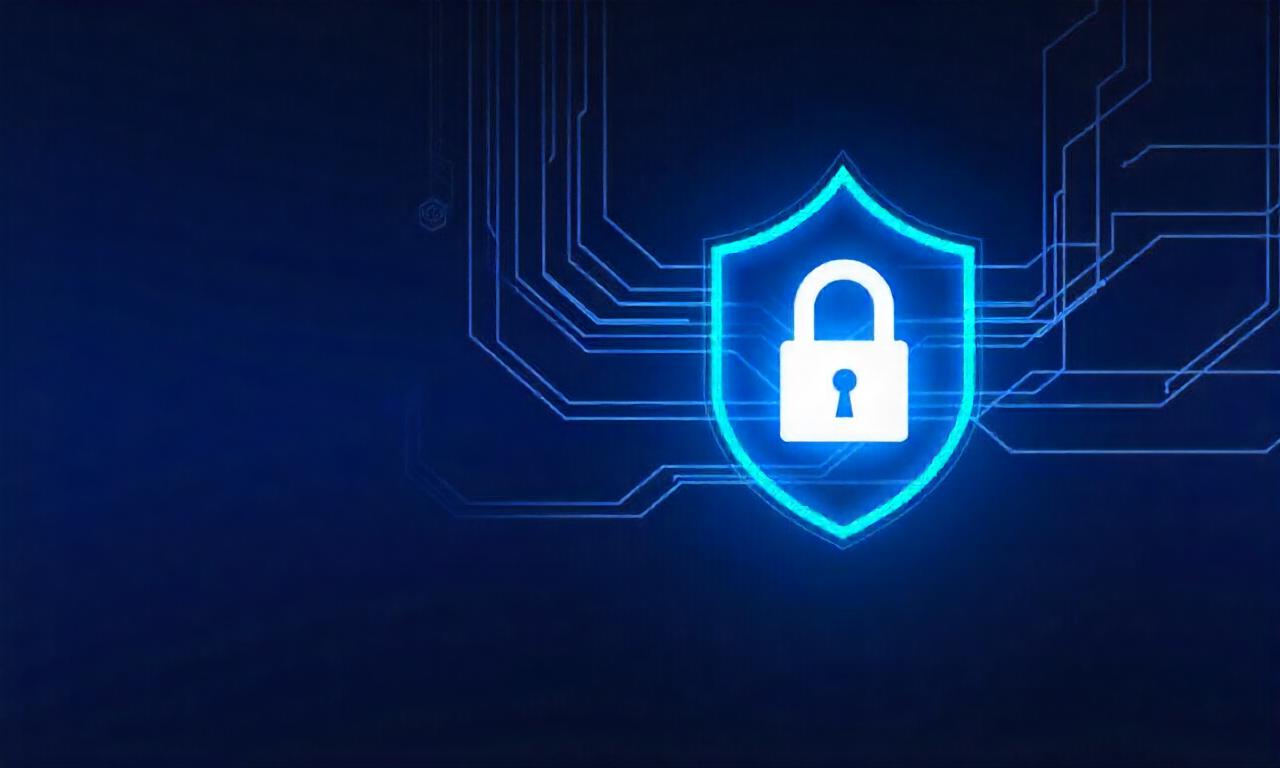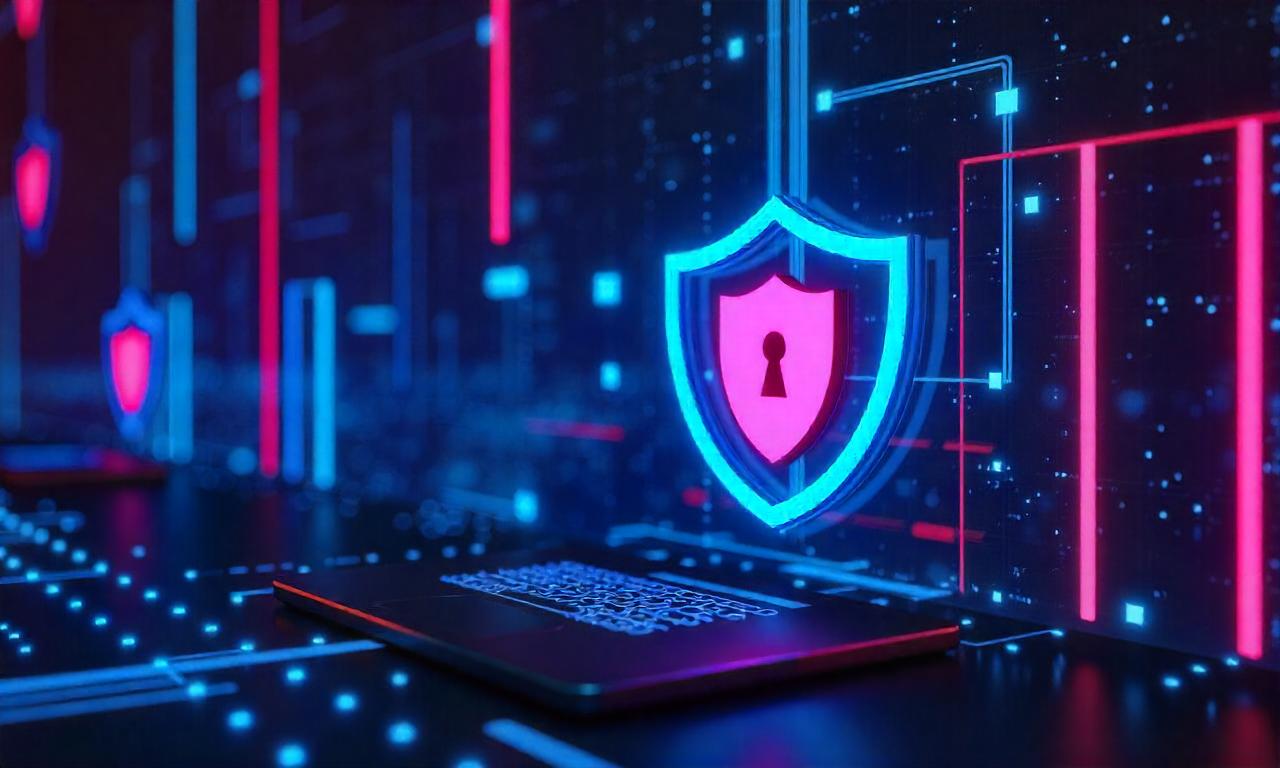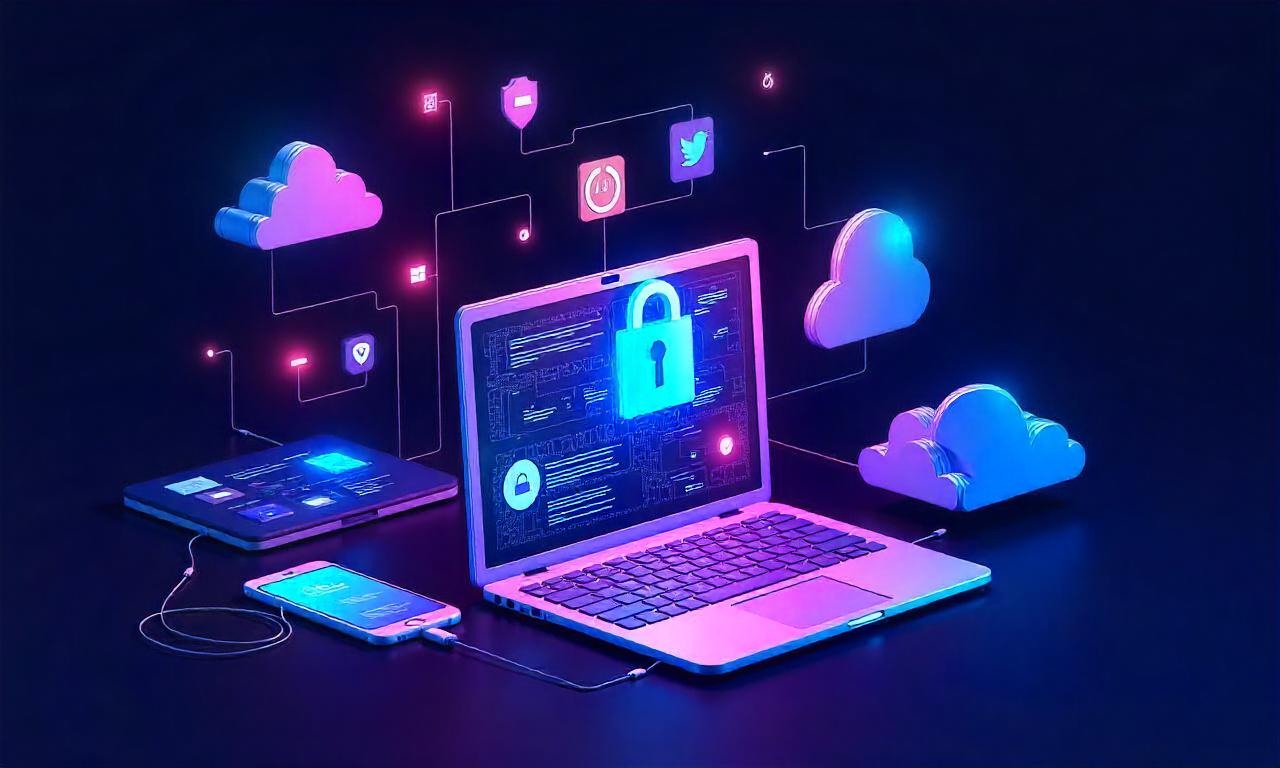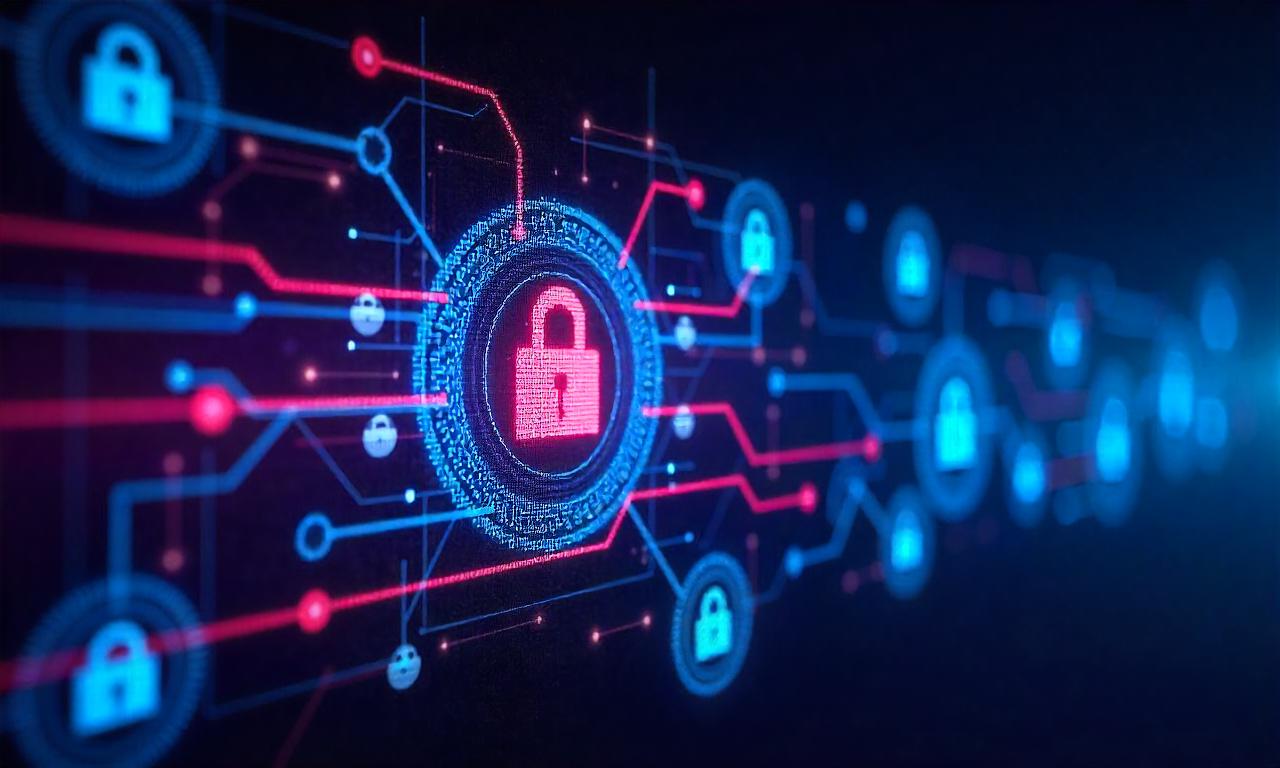In the relentless digital age, staying ahead of cyber threats isn't just an IT department's job; it's a fundamental business imperative. With threat actors constantly innovating and attack surfaces expanding, ignorance is no longer a viable defense strategy. The landscape of digital risk changes daily, with new vulnerabilities discovered, sophisticated attack methods deployed, and novel malware strains unleashed. To navigate this complex environment, business leaders, security professionals, and even savvy individuals need timely, accurate, and actionable intelligence. This monthly cybersecurity threat report is designed to be your essential briefing, distilling the most critical developments into key insights that empower you to fortify your defenses and make informed security decisions for the month ahead and beyond.
Table of Contents
ToggleThe Evolving Ransomware Landscape: Beyond Encryption
Ransomware continues to be a dominant and devastating threat, but its methods have evolved far beyond simple file encryption. Modern ransomware attacks are multi-faceted extortion campaigns designed to maximize pressure on victims and ensure payment. The days of a simple decryptor key in exchange for cryptocurrency are fading. Today, threat actors are not just locking your data; they are stealing it first, analyzing it for sensitive information, and weaponizing it against you, your employees, and your customers. This evolution requires a fundamental shift in how organizations perceive and defend against ransomware. It’s no longer just a data availability problem; it's a massive data breach and public relations crisis waiting to happen.
This strategic shift is best exemplified by the widespread adoption of double and triple extortion tactics. In a double extortion attack, cybercriminals first exfiltrate large volumes of sensitive data before encrypting the victim's network. If the victim refuses to pay the ransom for the decryption key, the attackers then threaten to leak the stolen data publicly on their dark web leak sites. Triple extortion adds another layer of pressure, where attackers use the stolen data to directly contact the victim’s customers, partners, or employees, or conduct DDoS (Distributed Denial-of-Service) attacks against the victim's public-facing websites, effectively paralyzing their business operations until the ransom is paid.
The proliferation of these advanced tactics is fueled by the highly professionalized Ransomware-as-a-Service (RaaS) ecosystem. RaaS operates like a malicious franchise model, where ransomware developers lease their malware and infrastructure to affiliates in exchange for a percentage of the ransom payments. This business model has significantly lowered the barrier to entry for launching sophisticated attacks, allowing less-skilled cybercriminals to deploy devastating campaigns. This month, we've observed a rise in RaaS platforms offering comprehensive "customer support," streamlined payment portals, and even pre-written negotiation scripts, making the entire extortion process disturbingly efficient and scalable.
Notable Ransomware Group Activity
Recent intelligence has highlighted increased activity from several prominent ransomware groups. One such group, often tracked by its signature TTPs (Tactics, Techniques, and Procedures), has been observed exploiting a recently disclosed vulnerability in a widely used VPN appliance. Their methodology involves gaining initial access through the unpatched vulnerability, moving laterally across the network using stolen credentials, and exfiltrating data to their own cloud storage before deploying the final encryption payload. This approach emphasizes the critical importance of timely patch management and robust access control policies.
Another group has shifted its focus to small and medium-sized businesses (SMBs), which they perceive as softer targets with less mature security infrastructures. They are increasingly using "living-off-the-land" techniques, leveraging legitimate administrative tools like PowerShell and WMI (Windows Management Instrumentation) to carry out their attacks. This makes their activity much harder to detect with traditional signature-based antivirus solutions, as they are using tools that are already present and trusted within the target environment. Defending against these attacks requires advanced endpoint detection and response (EDR) solutions and behavioral monitoring.
Sophisticated Phishing and Social Engineering Campaigns
Phishing remains the primary initial access vector for a vast majority of cyberattacks, and its sophistication continues to grow. Generic, poorly-worded phishing emails are being replaced by highly targeted, contextually-aware, and psychologically manipulative campaigns. Social engineering, the art of manipulating people into divulging confidential information or performing actions, is at the heart of these modern attacks. Threat actors are meticulously researching their targets using public information from social media, company websites, and professional networking sites to craft incredibly convincing lures.
These campaigns are no longer limited to email. Attackers are leveraging a multi-channel approach, using SMS (smishing), voice calls (vishing), and even messaging apps to initiate contact and build trust before delivering the malicious payload. The goal is to exploit human psychology—our curiosity, fear, urgency, or desire to be helpful. A common tactic involves impersonating a senior executive (CEO fraud) and creating a sense of urgency to trick an employee in the finance department into making an unauthorized wire transfer. The success of these attacks underscores that the human element is often the weakest link in the security chain.
The effectiveness and scale of these operations are being supercharged by artificial intelligence. Generative AI tools can now be used to create flawless, context-aware phishing emails in any language, eliminating the grammatical errors and awkward phrasing that were once tell-tale signs of a scam. AI can also be used to generate realistic deepfake audio or video for highly targeted vishing and spear-phishing campaigns, making impersonation attacks more believable than ever before. This represents a significant challenge for both employee training programs and technical security controls.
The Rise of "Quishing" (QR Code Phishing)
A particularly noteworthy trend this month is the sharp increase in quishing attacks. In a quishing campaign, attackers embed a malicious link within a QR code. They then distribute these QR codes via email or even by physically placing stickers on posters in public places. When a user scans the code with their smartphone, they are redirected to a convincing fake login page designed to steal their credentials or to a site that initiates a malware download.
The danger of quishing lies in its ability to bypass traditional email security filters, which are designed to scan URLs and attachments but not images like QR codes. Furthermore, users often scan QR codes out of convenience and curiosity, with less suspicion than they might have when clicking a link in an email. We have seen these attacks used to harvest Microsoft 365 credentials by sending emails that ask users to re-authenticate their multifactor authentication (MFA) by scanning a QR code, which then leads them to a credential-harvesting site.
Critical Vulnerabilities and Zero-Day Exploits
The continuous discovery of new vulnerabilities in software and hardware provides a steady stream of opportunities for malicious actors. A zero-day vulnerability is a flaw that is unknown to the software vendor and, therefore, has no patch available. When attackers discover and exploit such a vulnerability before a fix is released, they have a powerful and often undetectable weapon. This month's threat landscape was marked by the disclosure of several critical vulnerabilities in widely used enterprise software, including collaboration tools and network infrastructure devices.
The exploitation of these vulnerabilities often leads to initial access, privilege escalation, or full system compromise. Threat intelligence indicates that both state-sponsored APT (Advanced Persistent Threat) groups and financially motivated cybercrime syndicates are in a constant race to find and weaponize zero-day exploits. The value of a reliable zero-day is immense, allowing attackers to bypass even well-defended perimeters. For defenders, this highlights the importance of a defense-in-depth strategy, where multiple layers of security controls are in place to limit the impact of a potential breach, even if one layer is bypassed.
Effective vulnerability management is more than just applying patches; it requires a risk-based approach. Security teams must prioritize patching based on factors like the severity of the vulnerability (CVSS score), whether it is being actively exploited in the wild, and the business criticality of the affected asset. Without this prioritization, teams can quickly become overwhelmed by the sheer volume of new vulnerabilities disclosed each month. Organizations must have a clear inventory of their assets and a streamlined process for testing and deploying patches to critical systems as quickly as possible.
Supply Chain Attacks on the Rise
One of the most concerning vectors for vulnerability exploitation is the software supply chain. Instead of attacking a well-defended organization directly, attackers compromise a less-secure third-party software vendor. They then inject malicious code into a legitimate software update, which is then unknowingly distributed and installed by all of that vendor's customers. This tactic was famously used in the SolarWinds attack and remains a highly effective method for widespread infiltration.
This month, we've seen evidence of attackers targeting popular open-source libraries. A malicious contributor might submit code that appears benign but contains a hidden backdoor. Once this code is accepted and integrated into a widely used library, the vulnerability is automatically inherited by thousands of downstream applications that depend on it. This makes it incredibly difficult for organizations to track and mitigate, as they may not even be aware that they are using the compromised component. Verifying the integrity of all third-party code and implementing a Software Bill of Materials (SBOM) are becoming essential defensive measures.
Analysis of Prominent Threat Actor Groups
Understanding the "who" and "why" behind an attack is as important as understanding the "how." Threat actor groups can be broadly categorized into two main camps: state-sponsored APT groups and financially motivated cybercrime groups. APT groups often operate with geopolitical objectives, such as cyberespionage, intellectual property theft, or disruption of critical infrastructure. Their attacks are typically slow, stealthy, and persistent, as their primary goal is to maintain long-term access to the target network.
This month's intelligence reports suggest that several APT groups with links to specific nation-states have been actively targeting defense contractors, research institutions, and government agencies. Their primary goal appears to be the theft of sensitive research and strategic plans. They are leveraging custom malware and sophisticated spear-phishing campaigns to gain their initial foothold, often remaining dormant for months to conduct reconnaissance before exfiltrating data.
In contrast, financially motivated groups, including most RaaS affiliates, are driven by profit. Their attacks are often faster and "louder," as their goal is to extort money as quickly as possible. These groups are highly opportunistic and will target any organization they believe they can successfully compromise and monetize, regardless of industry or size. They are constantly innovating their business models and extortion tactics to maximize their return on investment. The lines can sometimes blur, with some nation-states using criminal gangs as proxies or engaging in financially motivated attacks to fund other operations.

Industry-Specific Threat Intelligence
Cyber threats are not monolithic; they vary significantly across different industries based on the type of data they handle, the technologies they use, and their specific regulatory environments. Tailoring your defensive strategy to the threats most likely to target your sector is a crucial step towards building cyber resilience.
For example, the healthcare sector continues to be a prime target for ransomware attacks due to the critical nature of its operations and the high value of patient data (PHI). Attackers know that any disruption to patient care creates immense pressure to pay a ransom quickly. In contrast, the financial services sector faces a higher-than-average volume of attacks aimed at credential theft, wire fraud, and the exploitation of online banking platforms.
The manufacturing and industrial sectors are increasingly facing threats to their Operational Technology (OT) and Industrial Control Systems (ICS). These are the systems that control physical processes, and an attack on them can lead to production shutdowns, equipment damage, or even physical safety risks. The convergence of IT and OT networks has expanded the attack surface, allowing attackers who compromise the corporate network to potentially pivot into critical control systems.
| Industry Vertical | Primary Threat Vectors | Key Targets | Recommended Focus Areas |
|---|---|---|---|
| Healthcare | Ransomware, Data Breaches, Phishing | Patient Health Information (PHI), EMR/EHR Systems, Medical Devices | Network Segmentation, Endpoint Security for Medical Devices, Regular Backups |
| Financial Services | Credential Stuffing, Phishing, Web App Exploits, Insider Threats | Customer PII, Banking Credentials, Trading Algorithms | Multi-Factor Authentication (MFA), Web Application Firewalls (WAF), Employee Training |
| Manufacturing | Ransomware, OT/ICS Disruption, IP Theft | Industrial Control Systems, Proprietary Designs, Supply Chain Data | IT/OT Network Segregation, OT-Specific Monitoring, Access Control |
| Retail & E-commerce | Point-of-Sale (POS) Malware, E-skimming, DDoS Attacks | Payment Card Information (PCI), Customer Databases | PCI-DSS Compliance, Secure Web Gateways, Regular Vulnerability Scanning |
| Government & Public Sector | Cyberespionage, Ransomware, Insider Threats | Classified Information, Citizen Data, Critical Infrastructure | Zero Trust Architecture, Threat Hunting, Information Sharing (e.g., via ISACs) |
Proactive Defense: Turning Insights into Action
Threat intelligence is only valuable when it is used to drive defensive actions. Consuming a threat report is the first step; the next and most critical step is translating those insights into tangible improvements in your security posture. A proactive defense strategy is built on the assumption that you will be targeted and focuses on making it as difficult and costly as possible for an attacker to succeed.
This requires a multi-layered approach that combines technology, processes, and people. No single tool or policy can protect against the diverse array of threats outlined in this report. Instead, organizations must build a resilient security program that can prevent, detect, respond to, and recover from cyberattacks. This means moving beyond a purely preventative mindset and embracing capabilities that allow you to quickly identify and contain a breach when it inevitably occurs.
The following sub-sections outline key areas where organizations can take immediate, proactive steps to defend against the threats highlighted this month. These are not one-time fixes but continuous processes that form the foundation of a mature cybersecurity program. By focusing on these fundamentals, you can significantly reduce your risk exposure and improve your ability to withstand a sophisticated attack.
Implement a Robust Patch Management Program
Many of the most impactful breaches begin with the exploitation of a known, patchable vulnerability. A robust patch management program is one of the most effective security controls an organization can implement. This goes beyond simply running Windows Update. It involves maintaining a comprehensive inventory of all hardware and software assets, continuously scanning for vulnerabilities, prioritizing patches based on risk, and deploying them in a timely manner. Critical vulnerabilities being actively exploited in the wild should be patched within hours or days, not weeks or months.
Enhance Employee Security Awareness Training
Given that social engineering and phishing are the root cause of most breaches, your employees are your first line of defense. Generic, once-a-year training is no longer sufficient. Effective security awareness training must be continuous, engaging, and relevant to the threats employees actually face. Conduct regular, simulated phishing campaigns to test employee awareness and provide immediate, context-specific feedback to those who click. Train them to recognize the signs of modern threats like quishing and CEO fraud, and establish a clear, simple process for them to report anything suspicious without fear of blame.
Leverage a Zero Trust Architecture (ZTA)
The traditional "castle-and-moat" security model, where everything inside the network is trusted, is obsolete. A Zero Trust Architecture is based on the principle of "never trust, always verify." It assumes that a breach is inevitable or has already occurred, and therefore no user or device should be trusted by default, regardless of whether they are inside or outside the network perimeter. Every access request must be strongly authenticated, authorized, and continuously monitored. Implementing strong multi-factor authentication (MFA) everywhere is a critical first step towards a Zero Trust model and is highly effective at preventing attacks that rely on stolen credentials.
—
<h3>Frequently Asked Questions (FAQ)</h3>
Q1: What is the single most important thing a small business can do to improve its cybersecurity?
A: Implementing Multi-Factor Authentication (MFA) across all possible services (email, VPN, banking, etc.) is arguably the single most impactful security control a small business can deploy. The vast majority of attacks rely on stolen credentials. MFA provides a critical second layer of defense that can stop these attacks in their tracks, even if an attacker manages to steal a user's password.
Q2: My company uses cloud services like Microsoft 365 and Google Workspace. Aren't we automatically secure?
A: No. While cloud providers have excellent security for their underlying infrastructure (a "shared responsibility model"), you are responsible for securing your data in the cloud. This includes configuring security settings properly, managing user access and permissions, defending against phishing attacks targeting your users' credentials, and backing up your cloud data. Misconfigurations and weak user credentials are the leading causes of cloud security incidents.
Q3: What is a "Zero-Day Exploit" and how can I defend against it?
A: A zero-day exploit is an attack that targets a previously unknown software vulnerability for which no patch is available. Because they are unknown to defenders, they are very difficult to protect against directly. The best defense is a "defense-in-depth" strategy. This means having multiple layers of security so that if one layer is bypassed by a zero-day exploit (e.g., your firewall), other layers like endpoint detection, network segmentation, and strict access controls can still prevent the attacker from achieving their objectives.
Q4: Why is employee training so heavily emphasized when we have advanced security software?
A: Advanced security software is essential, but it cannot stop a determined attacker from targeting your employees with sophisticated social engineering. An attacker may craft a perfectly legitimate-looking email to trick an employee into wiring money or handing over their credentials. No software can perfectly judge human intent. Therefore, a well-trained, security-conscious employee who can spot and report these attempts is an irreplaceable part of your defense. They are the "human firewall."
—
<h2>Conclusion</h2>
The cyber threat landscape is a dynamic and challenging environment, but it is not an insurmountable one. As this month's report shows, threat actors are professional, innovative, and relentless, leveraging everything from AI-powered phishing to complex supply chain attacks. However, their core tactics often rely on exploiting fundamental weaknesses: unpatched vulnerabilities, stolen credentials, and human error.
By staying informed through regular threat intelligence and taking proactive, deliberate action, organizations can build a formidable defense. A commitment to the fundamentals—robust patch management, continuous employee training, and a modern Zero Trust security model—is the most effective strategy for building long-term cyber resilience. The insights in this report are not meant to inspire fear, but to empower action. Stay vigilant, stay informed, and turn this intelligence into your strategic advantage.
***
Article Summary
This monthly cybersecurity threat report provides key insights into the current digital threat landscape. It highlights that modern ransomware has evolved beyond simple encryption to include double and triple extortion tactics, fueled by the professional Ransomware-as-a-Service (RaaS) model. Phishing and social engineering have grown more sophisticated, using AI for hyper-realistic lures and new vectors like QR code phishing (quishing) to bypass traditional defenses. The report also covers the persistent danger of critical vulnerabilities and zero-day exploits, with a particular focus on the growing risk of software supply chain attacks. It analyzes the motivations of prominent threat actor groups, distinguishing between state-sponsored APTs and financially motivated cybercriminals. Finally, it provides industry-specific threat intelligence and outlines crucial proactive defense strategies, emphasizing the importance of robust patch management, continuous employee training, and adopting a Zero Trust architecture. The article concludes that while threats are advanced, a focus on security fundamentals is the most effective way to build resilience.

